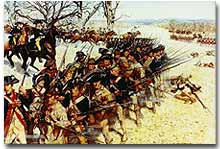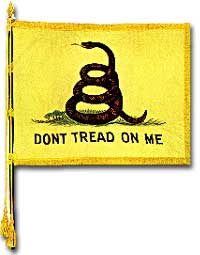
14. Making Rules

The Stamp Act ended up being a major catalyst toward the American colonies organizing an active resistance to British rule. The Continental Congress was the first political manifestation of the proto-nation.
The American Revolution began the process of creating a new nation in a number of different ways; by protesting British rule through legal and extra-legal actions; by waging a war to end America's status as a colonized territory; and by designing new forms of government for what Patriots hoped would become independent states.
The process of making new rules was crucial to the Revolutionary struggle. Many scholars think it was the most distinctive and most important aspect of the Revolution. Making new rules and new organizations of government began very early in the resistance movement. In fact, the development of new political organizations preceded the war and played a central role in making the Revolution happen when and how it did. New groups calling themselves Sons of Liberty and the Stamp Act Congress met in 1765; Committees of Correspondence to share information about the resistance movement were formed in 1772, and the Continental Congress first met in 1774.

The struggle and solidarity of the Continental Army is illustrated in this H. Charles McBarron, Jr. painting, The Battle of Guilford Court House, March 15, 1781.
The First Continental Congress that met in Philadelphia was a bold, new, all-colony assembly that drew leaders from all of the 13 colonies except Georgia. As its name suggests, its purpose was to act on a continental scale. Perhaps its most important early action was to call for an economic attack against Britain through a unified boycott of British goods. To enforce this colony-wide program the Congress called for the formation of local political bodies in every town that were called Committees of Safety and Inspection. The British government was outraged by these new American rules and declared the Continental Congress an illegal organization. The period of negotiation between Britain and America seemed to have come to an end.

As the Continental Congress had not specified what flag their naval vessels shoud fly, captains were left to their own devices. A rattlesnake with 13 rattles was a popular choice.
When the Continental Congress met for the second time in 1775, the situation had gotten much worse because fighting had erupted the previous month in Concord and Lexington. Although the war had begun and the Congress had organized the Continental Army, the colonies had not declared their independence and many leaders in Congress still hoped to reconcile with Britain. The crucial turn toward creating new rules for new governments separate from the British Empire would not come for another year, but would happen before the Declaration of Independence on July 4, 1776.
On May 10, 1776, the Continental Congress directed the colonies to suppress royal authority and to create institutions based on popular rule. As a result, the crucial Revolutionary act of creating new governments received its earliest attention at the state level where the former colonies began to make new rules for themselves.





